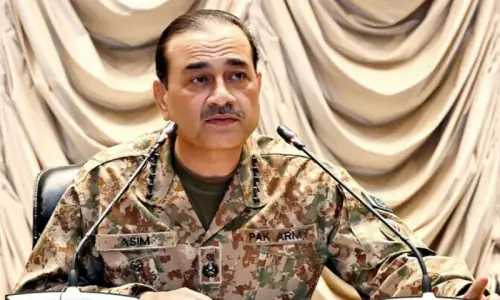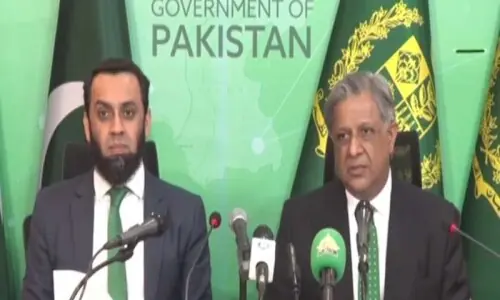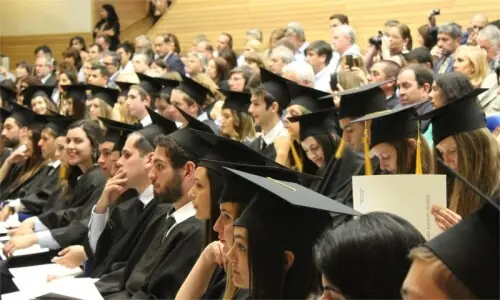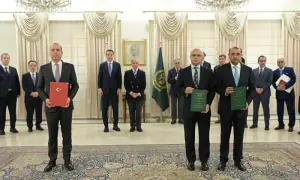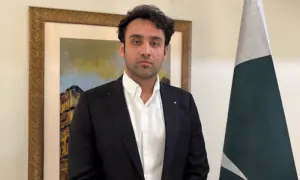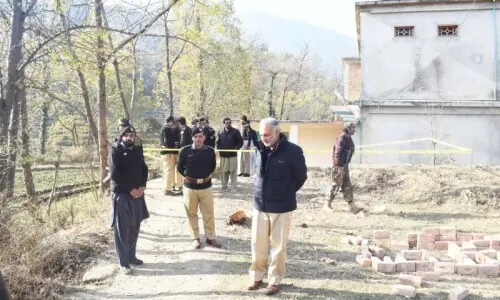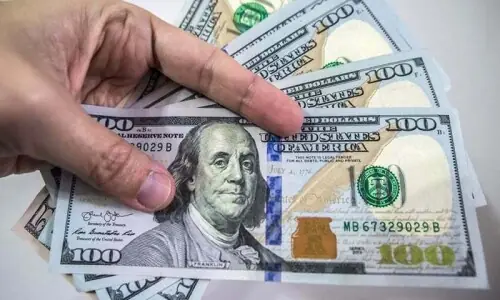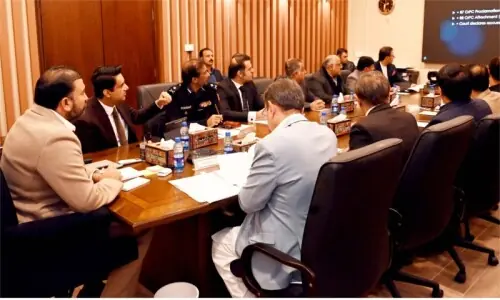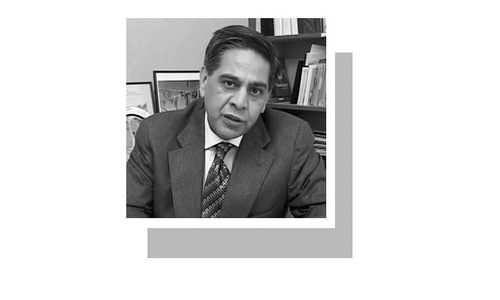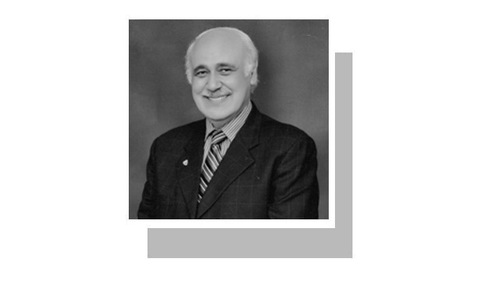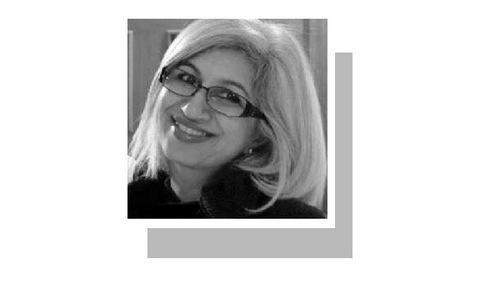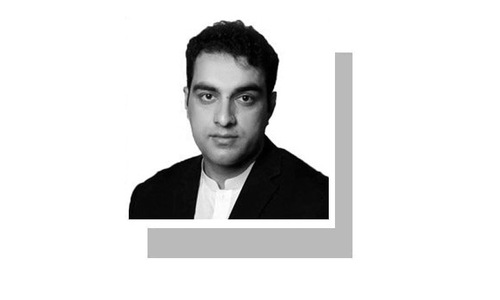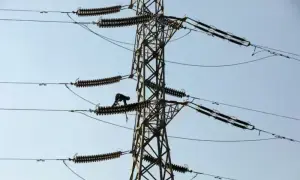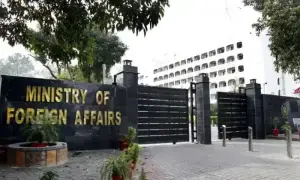OLD ghosts crowd the streets of Teri, a hill settlement deep in the district of Karak. Now and then, one comes across them in the crumbling brick lanes: ancient mud-brick houses with architecture that lends the humble decrepit village abode an air of dignity, whispering of an affluent Hindu past. Much of that past has been laid to rest in Teri, buried under the debris of time. And concrete structures built by Muslim occupants when the hill community of Hindus migrated to India after partition.
However, where a past can be buried, not always its ghosts. One such ghost lies at the heart of Teri, refusing to lie still. It is the dispute over the shrine of Shri Paramhans Ji Maharaj, a Hindu mystic who came to Teri a hundred years ago. A guru of high standing, the Maharaj was not cremated but buried here, as per Hindu tradition, in muraqba — a sitting meditative posture. He built a temple at Teri in his lifetime. On his death, his followers added a room to it as a samadhi or a shrine where he was buried.
Nothing of the shrine remains now but a lingering dispute between the Maharaj’s Hindu disciples and the local community that, after partition, demolished the temple and the shrine to build houses. Or more particularly a certain Mufti Iftikharuddin whose family occupied the temple and closed the door to the shrine that now falls in a house behind his. Teri, or for that matter the rest of Karak, doesn’t have any Hindus left but for the community — especially the Maharaj’s disciples — the spiritual significance of his burial place is singular.
“We have a pilgrimage site at Hinglaj in Balochistan that has no Hindu population but that doesn’t mean it should be taken over,” says Ramesh Kumar Vankwani, patron of the Pakistan Hindu Council, who moved the Supreme Court early this month against the illegal occupation of the shrine, an evacuee property owned and protected by the Evacuee Trust Property Board (ETPB). “Thousands of pilgrims from Pakistan and India go there annually.”
While the top court is on the case, the ETPB and Ministry of Religious Affairs and Interfaith Harmony have decided in the past that the property belongs to the Hindu community, a decision contested by the occupant Iftikharuddin. To persuade Iftikharuddin to leave the property, the Hindu community paid him Rs375,000 in 1997 through Nasir Khan Khattak, now a PTI MNA. Iftikharuddin says he has returned the money.
At the heart of the issue is a 2005 decision of religious leaders asked by Akram Durrani, the Jamiat Ulema-i-Islam-Fazl (JUI-F) chief minister who led the MMA government in the province back then, to resolve the dispute. After the Hindu community sought the help of Maulana Fazlur Rahman, the chief of JUI-F, Durrani wrote to Maulvi Sharif, a local cleric, to decide the matter through a Jirga led by independent judges — a committee of ulema. The Jirga decided in favour of the Hindu community but Sharif rejected the decision even though parties to the conflict had agreed that the Jirga decision would be acceptable to all.
The Hindu delegation went back to Durrani who asked the district administration that the ulema committee’s decision should be implemented. The administration said it couldn’t because it would have implications for law and order and, perhaps more importantly, exploration of oil and gas in the district. A decade on, the administration still clings to that stance as the Supreme Court seeks to resolve the dispute.
In the Teri market where men sit idly on stairs in front of raised shops, and an abundance of watermelons tantalise with a promise of respite from the blistering heat, people seem oblivious to the shrine issue, generations of them having lived on evacuee property without anyone contesting it. Until 1956, Karak was ruled by the Teri Nawab, and served as the district’s capital. The district’s desolate landscape sits atop huge reservoirs of uranium, oil, gas and gypsum.
“It has now become a community issue where some people want to resolve the issue but are afraid of fatwas,” says Mohammad Nawaz Wazir, the Assistant Commissioner following up on the court’s order. “The community is afraid that if they give a piece, they may end up inviting more claims.”
Maulvi Sharif told Wazir that even if the administration rebuilt the shrine, they wouldn’t allow “outsiders” to visit Teri. That threat, the administration fears, could translate into stopping explorers from visiting Karak that sits on huge reservoirs of oil and gas, producing 40,000 barrels of crude oil annually, a wealth that has yet to turn the fortunes of the district and its people.
The Supreme Court wants the local ulema to persuade people to rebuild the shrine, a repeat of the Jirga held earlier rather than upholding its decision. But the ulema, including the JUI-F that has a huge following in the southern districts and initially helped the Hindu community, say it is not the best course to take.
“Even now, not a lot of people know of the issue,” says Maulana Mirzaqim Khan of JUI-F, who is president of the Khattak Ittehad that works for the rights of Khattaks, the dominant tribe in Karak. “But if we touch it, there is bound to be some aalim rising to lead people astray. Maybe we can build the shrine but with the Hindus here to take care of it, and militancy raging in the region, can we ensure it will not be destroyed again. What happens then?”
Back in the village Chak in Shikarpur, the shrine is the first thing on Prem Talreja’s mind when he prepares for the morning prayers. Talreja, a member of PHC, has led several delegations to Khyber Pakhtunkhwa seeking resolution to the issue. “Every morning when I stand before the picture of the Maharaj, I think of the Teri village and my prayers that are meant to bring hope, only causes me despair because I know his soul hasn’t got a place to rest.”
Published in Dawn, June 27th, 2014

